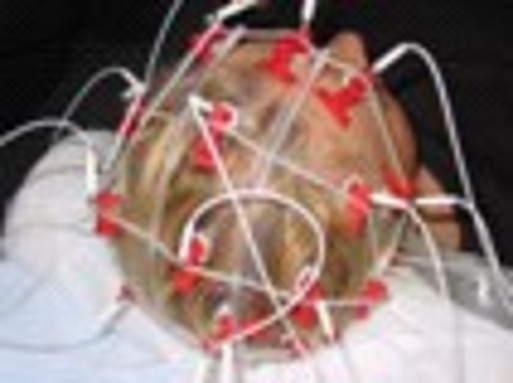Electroencephalography (EEG)
During an EEG, brain waves are measured. In order to do so, electrodes are placed on the surface of the head. The procedure takes about 45 minutes, with 20 minutes being pure conduction which is conducted while laying down, relaxed. The patient will be given various tasks, such as opening the eyes, closing the eyes, breathe deeply inward, calculate simple math problems. In general it is not necessary to use photic stimulation. These tasks can help identify latent epileptic potential in the brain. The EEG is recorded with a video recorder in order to better study the changes in brain waves. Hair must be washed at least a day before the procedure and on the day of the procedure patients should not use hair spray or hair gel.In certain cases, a sleep EEG is necessary. On the evening before the examination, the patient should remain awake. Patients over 14 years of age should get no more than 2 hours sleep the night before. On the day of the procedure, patients should rise early (i.e. 6 am) and go through their normal, daily routine. Up to the procedure in the early afternoon, patients are not allowed to sleep or doze. Meals should be eaten regularly, however drinks with a lot of caffein or sugar (coffee, black tea, cola, etc) should be avoided. Medications with stimulants should also be avoided. Patients with epilepsy may take their regular preventative medication. During the examination, patients should reach a light, deep sleep which is why the conduction lasts 30-60 minutes.

